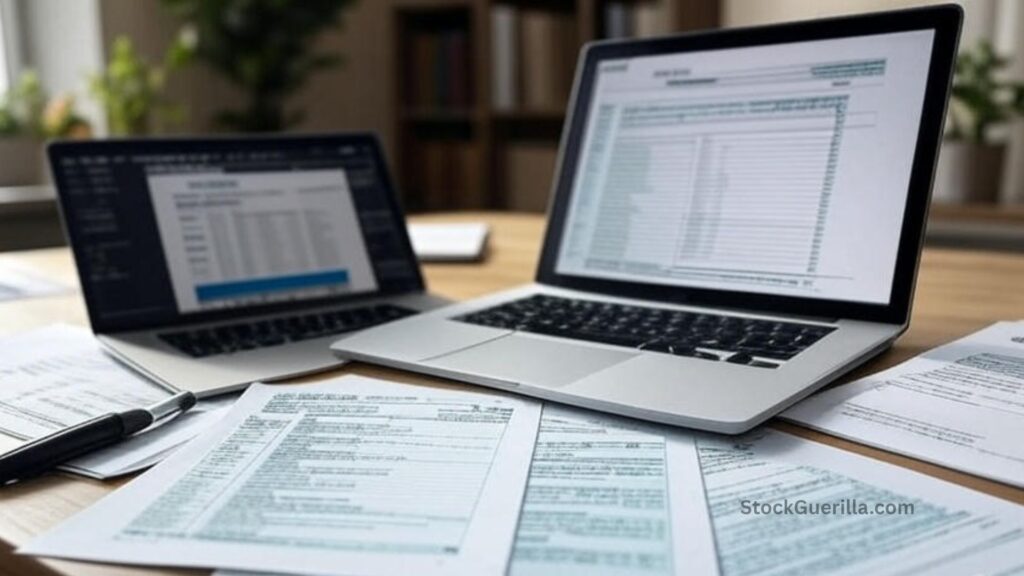How to Invest in Dividend-Paying Stocks?
If you’ve ever wondered how to generate steady income from the stock market, dividend-paying stocks may be the answer. Unlike growth stocks that rely solely on price appreciation, dividend stocks provide regular cash payouts—making them a popular choice among income-focused investors, retirees, and even active traders.
But here’s the twist: not everyone buys dividend stocks just to hold them long term. Some investors use a short-term trading tactic called dividend capture, where they buy a stock just before it pays a dividend, hold it through the payout date, and then sell it—pocketing the dividend along the way.
This guide will walk you through everything you need to know about dividend-paying stocks, including:
- The key dividend dates every investor must know
- How the dividend capture strategy works (with real-world examples)
- Advanced tactics using options
- The tax and cost implications of dividend investing
- The pros and cons of dividend capture vs. long-term dividend investing
- FAQs and actionable next steps
Let’s dive in.
📅 How It Works: The Important Dates

Understanding the dividend timeline is essential whether you’re a long-term holder or a short-term trader. Missing one of these dates can mean missing your payout.
| Key Date | What It Means |
|---|---|
| Declaration Date | The day the company’s board announces the dividend and payout amount. |
| Ex-Dividend Date | The most important date. Buy before this day to qualify for the dividend. On this date, the stock typically drops by the dividend amount. |
| Record Date | The company checks shareholder records to determine who gets paid. |
| Pay Date | The dividend is deposited into shareholder accounts. |
💡 Pro Tip: Use dividend calendars (many are free online from sites like Nasdaq or Yahoo Finance) to plan your trades ahead of time.
🧠 Jumping In: How to Capture a Dividend
The dividend capture strategy is straightforward but requires careful timing. Here’s the step-by-step process:
- Buy the Stock Before the Ex-Dividend Date
- This locks in your eligibility for the dividend.
- Hold Through the Ex-Dividend Date
- You only need to hold the stock overnight. No need to wait until the pay date.
- Sell the Stock After Qualifying for the Dividend
- In theory, the stock price drops by the dividend amount on the ex-date. But markets are rarely perfect, meaning you may keep some of the dividend value even after selling.
Example:
- Stock dividend = $1.00
- Price drop on ex-date = $0.50
- Net gain = $0.50 profit (ignoring taxes/fees)
👉 Traders often prefer high-yield or frequent dividend stocks (monthly or quarterly payers) to maximize the strategy’s effectiveness.

Also Read: What are the Market Expectations for Upcoming Earnings Seasons?
🧾 Advanced Moves: Using Options
For experienced traders, options can enhance or hedge a dividend capture strategy.

- Call Options – Lock in a purchase price before the ex-dividend date without buying the stock outright.
- Put Options – Hedge against potential price declines after the dividend payout.
Some traders roll profits from one dividend capture to the next, creating a chain of income opportunities across multiple stocks.
💡 Pro Tip for Advanced Investors:
Focus on large-cap, liquid companies with moderate yields (around 3%). They offer a balance between risk and reward. Dividend-paying ETFs and U.S.-listed international stocks can also work well.
📌 Real-Life Example
- Coca-Cola is a classic dividend stock with decades of reliable payouts. Here’s how dividend capture could play out:
- July 18, 2023: KO trades at $60.57
- July 19, 2023: Dividend of $0.46 announced; stock rises to $61.64
- Sept 12, 2023: A trader buys KO at $58.40 before ex-dividend date
- Sept 14, 2023: KO closes at $58.43 (slight capital gain) + dividend payout
👉 While the gain isn’t massive, the combination of dividend income + small capital appreciation illustrates how timing matters in dividend capture.

Also Read: What are the Best-Performing Stocks in the Transportation Industry?
💡 Tax & Cost Considerations
One of the biggest pitfalls of dividend capture is how taxes and fees eat into profits.

Taxes
- To qualify for lower “qualified dividend” tax rates, you usually need to hold a stock for at least 60 days around the ex-dividend date.
- Short-term dividend capture profits are often taxed as ordinary income—potentially as high as your regular income tax rate.
Costs
- Frequent buying and selling racks up trading fees and spreads.
- Even “commission-free” brokers may have hidden costs (like wider bid-ask spreads).
- Example: A stock pays $0.50 in dividends but drops $0.40 in price. Net gain is just $0.10—before fees and taxes.
💡 Pro Tip: Stick with brokers that offer low or zero-commission trades and be realistic about the scale of your trades—larger positions are often required to make the math work.
✅ Pros and Cons of Dividend Capture
Here’s a quick comparison to help you decide if this strategy fits your goals:
| Pros | Cons |
|---|---|
| Potential for quick income | Price drop can offset or erase the dividend |
| Works across many dividend-paying stocks | High trading frequency increases costs |
| Can be applied to multiple sectors & ETFs | Dividends often taxed at ordinary income rates |
| Flexibility (monthly, quarterly, annual payouts) | Requires precise timing & discipline |
🤝 Final Thoughts and Next Steps
Dividend-paying stocks offer two distinct paths:
- Long-term investors benefit from compounding, reinvesting dividends, and steady growth over time.
- Active traders can use dividend capture for short-term income, but must carefully manage timing, taxes, and costs.
Next Steps for Investors
- Track dividend calendars and set reminders
- Build a watchlist of high-quality dividend stocks (large-cap, stable companies)
- Consider ETFs or international dividend stocks for diversification
- For advanced traders, experiment with options strategies
- Always weigh tax efficiency and transaction costs before jumping in
👉 If you’re just starting, focus on long-term dividend investing. If you’re an experienced trader, dividend capture may add an extra income stream to your strategy.

Also Read: Which REITs are Yielding High Returns?
❓ FAQs About Dividend Investing
Q1. What is a dividend?
A dividend is a payment made by a company to its shareholders, usually in cash or additional stock, as a share of profits.
Q2. How often are dividends paid?
Most dividends are quarterly or annually, but some companies pay monthly.
Q3. Can I earn dividends without holding a stock for long?
Yes, through dividend capture strategies, you only need to hold the stock through the ex-dividend date.
Q4. Are dividends taxed?
Yes. Qualified dividends are taxed at lower rates if holding requirements are met, but short-term dividend capture usually results in ordinary income taxation.
Q5. Which stocks are best for dividend capture?
Large-cap, high-liquidity stocks with mid-range yields (~3%) are ideal. Dividend ETFs can also work.




Post Comment